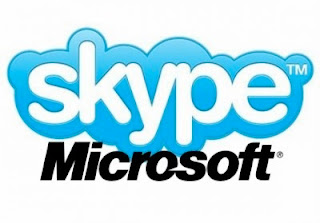No.1. Integrate it with the Xbox
Roughly 10 million Microsoft users already have cameras attached to their devices. That’s the number of Xbox Kinect systems sold since the motion-sensing game system was released last year.
It seems like a no-brainer that Microsoft would integrate Skype’s advanced chat technologies with that, as well as with its Xbox LIVE service.
The Xbox 360 already has a chat function. But gamers have largely been unimpressed, opting for other consoles like the PlayStation for multiplayer games that require real-time communication.
Similarly, Skype already has TV-compatible webcams and software, but it’s hardly been a high-profile feature.
Putting Skype on the Xbox could push both products forward.
No.2. Improve the Windows Phone
Let’s be honest: Windows Mobile phones aren’t selling like the iPhone or the growing cascade of phones running Google’s Android system.
The Windows Phone 7 system really hasn’t had an answer for the iPhone’s FaceTime app or Google Talk’s newly added video. Now it will, with the best-in-breed video and voice chat app at its disposal.
“It’s pretty obvious today that not everyone is doing video, particularly from their phone,” Ballmer said. “That’s an opportunity where there are a lot of things that could be done.”
Of course, Apple and Android products can already run Skype apps. So it will be interesting to see how that plays out. (Ballmer assured current Skype customers that those platforms will still be supported.)
“Given that Skype has been in use for more than a half-dozen years and has a growing user base, it would be difficult for Microsoft to begin eliminating Skype support for other mobile platforms,” Kevin C. Tofel wrote for tech blog GigaOM.
“But future features and other value-add services could be offered exclusively or first on Windows Phone 7 devices going forward, giving consumers a ‘killer app’ to consider when making a smartphone purchase.”
No.3. Show up at your office meeting
One of the reasons Microsoft was considered to be high on Skype was so Google and Cisco Systems, both rumored to be interested, wouldn’t get their hands on it.
In terms of workplace communication, the latter may be more important than the former. Cisco is the first name people think of when office video conferencing and teleconferencing are mentioned.
But Microsoft has made inroads with its Lync system, and adding Skype’s software would move it one step further.
Oh yeah … and it just so happens that Skype CEO Tony Bates is a former Cisco executive, as are other members of the Skype team.
Microsoft’s Office 365, which will include an online-only option, is expected to be released later this year. The suite of workplace tools will include Lync.
No.4. Appear on Facebook
Yes, Facebook was rumored to be one of the tech titans in the running to buy Skype. The social media giant’s interest seems a clear indication that Mark Zuckerberg and Co. would like to beef up Facebook Chat with video.
It was just a passing reference. But on Tuesday, Ballmer mentioned “social” as one of the possible uses for a Microsoft-owned Skype.
Microsoft actually owns a piece of Facebook, having bought in for $240 million in 2007. And the two have worked together on projects since then. (Skype now also lets users integrate their news feeds and friends lists.)
Getting a product in front of Facebook’s 600 million or so users would be huge.
No.5. Bring some juice back to Hotmail
By virtue of its ties to Microsoft, Hotmail still has tons of users worldwide. But do you know anybody who’s excited about it?
For the past year or two, Microsoft has been punching up Hotmail, an e-mail service that has lost considerable cool points in the wake of Gmail’s rise.
If Microsoft managed to seamlessly integrate Skype-quality video chat into Hotmail, it would definitely turn some heads.



